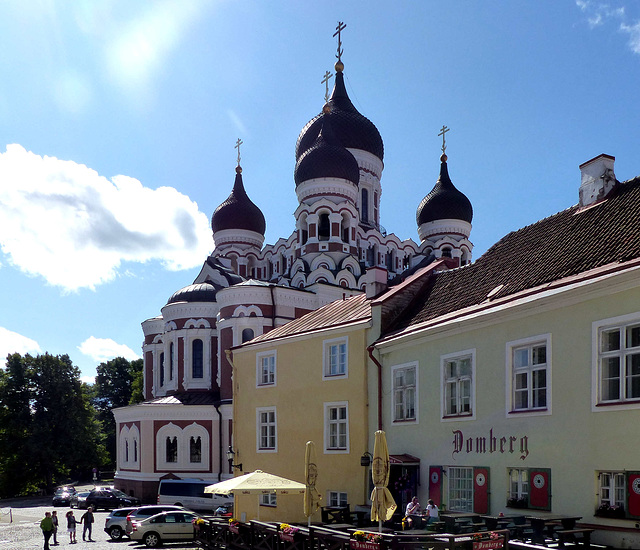Tallinn - Aleksander Nevski katedraal
Tallinn - Kaarli kirik
Tallinn
Tallinn
Tallinn - Kumu
Tallinn - Kumu
Tallinn - Kumu
Tallinn - Kumu
Tallinn - Kumu
Tallinn - Kumu
Tallinn - Kumu
Haapsalu - Piiskopilinnus
Haapsalu - Toomkirik
Haapsalu - Toomkirik
Haapsalu - Piiskopilinnus
Haapsalu - Piiskopilinnus
Haapsalu
Haapsalu
Haapsalu
Haapsalu
Haapsalu
Märjamaa - Maarja
Märjamaa - Maarja
Tallinn - Toomkirik
Tallinn - Toomkirik
Tallinn - Toomkirik
Tallinn - Toomkirik
Tallinn - Suurgildi hoone
Tallinn - Suurgildi hoone
Tallinn - Suurgildi hoone
Tallinn - Oleviste kirik
Tallinn - Schwarzhäupterhaus
Tallinn - Püha Vaimu kirik
Tallinn - Püha Vaimu kirik
Tallinn - Püha Vaimu kirik
Tallinn - Püha Vaimu kirik
Tallinn
Tallinn
Tallinn
Tallinn - Niguliste kirik
Tallinn - Niguliste kirik
Tallinn - Niguliste kirik (PiP)
Tallinn - Niguliste kirik
Tallinn - Niguliste kirik
Tallinn - Niguliste kirik
Location
Lat, Lng:
You can copy the above to your favourite mapping app.
Address: unknown
You can copy the above to your favourite mapping app.
Address: unknown
See also...
Keywords
Authorizations, license
-
Visible by: Everyone -
All rights reserved
-
83 visits
Tallinn - Aleksander Nevski katedraal


Tallinn, the capital city of Estonia, is situated on the shore of the Gulf of Finland of the Baltic Sea. It is only 80 kilometres south of Helsinki. From the 13th century until the first half of the 20th century Tallinn was known as Reval.
The first recorded claim over the place was laid by Denmark after a raid in 1219 led by Valdemar II. In 1227, the Order of the Brothers of the Sword conquered Reval and three years later recruited 200 Westphalian and Lower Saxon merchants from Gotland, who settled below the castle and were granted freedom of customs and land. In 1238 Reval fell back to Denmark, Under renewed Danish rule, the city rapidly grew in size and economic importance. In 1248, the Danish king granted it the Lübische Stadtrecht (town charter). Due to the strategic location, its port became a significant trade hub, especially in the 14–16th centuries when Tallinn grew in importance as the northernmost member city of the Hanseatic League.
The king of Denmark sold Reval along with other land possessions in northern Estonia to the Teutonic Knights in 1346.
The Toompea Hill (Domberg) was an independent area that was only merged with Tallinn in 1877. This was the site of Tallinn Castle, built in the 10th or 11th century and replaced by a Danish castle in the early 13th century. Today it is the seat of the head of government,numerous embassies, the Tallinn Chathedral and the Alexander Nevski Cathedral.
The Nevsky Cathedral was built between 1894 and 1900 as a Russian Orthodox cathedral in what was then the Estonia Governorate of the Russian Empire. A Luther monument was originally planned for the site on the Toompea (Domberg), but the Russian authorities prohibited its erection. The consecration of the cathedral took place on 30 April 1900.
During Estonian independence, the cathedral, which was seen as a symbol of Russification, was to be demolished in 1924. During WWII the German occupants closed the cathedral in 1941. At the end of the 20th century it was thoroughly restored.
The first recorded claim over the place was laid by Denmark after a raid in 1219 led by Valdemar II. In 1227, the Order of the Brothers of the Sword conquered Reval and three years later recruited 200 Westphalian and Lower Saxon merchants from Gotland, who settled below the castle and were granted freedom of customs and land. In 1238 Reval fell back to Denmark, Under renewed Danish rule, the city rapidly grew in size and economic importance. In 1248, the Danish king granted it the Lübische Stadtrecht (town charter). Due to the strategic location, its port became a significant trade hub, especially in the 14–16th centuries when Tallinn grew in importance as the northernmost member city of the Hanseatic League.
The king of Denmark sold Reval along with other land possessions in northern Estonia to the Teutonic Knights in 1346.
The Toompea Hill (Domberg) was an independent area that was only merged with Tallinn in 1877. This was the site of Tallinn Castle, built in the 10th or 11th century and replaced by a Danish castle in the early 13th century. Today it is the seat of the head of government,numerous embassies, the Tallinn Chathedral and the Alexander Nevski Cathedral.
The Nevsky Cathedral was built between 1894 and 1900 as a Russian Orthodox cathedral in what was then the Estonia Governorate of the Russian Empire. A Luther monument was originally planned for the site on the Toompea (Domberg), but the Russian authorities prohibited its erection. The consecration of the cathedral took place on 30 April 1900.
During Estonian independence, the cathedral, which was seen as a symbol of Russification, was to be demolished in 1924. During WWII the German occupants closed the cathedral in 1941. At the end of the 20th century it was thoroughly restored.
Marco F. Delminho, Ulrich John, Alexander Prolygin have particularly liked this photo
- Keyboard shortcuts:
Jump to top
RSS feed- Latest comments - Subscribe to the comment feeds of this photo
- ipernity © 2007-2025
- Help & Contact
|
Club news
|
About ipernity
|
History |
ipernity Club & Prices |
Guide of good conduct
Donate | Group guidelines | Privacy policy | Terms of use | Statutes | In memoria -
Facebook
Twitter

Sign-in to write a comment.